How to plant greenery on a site?
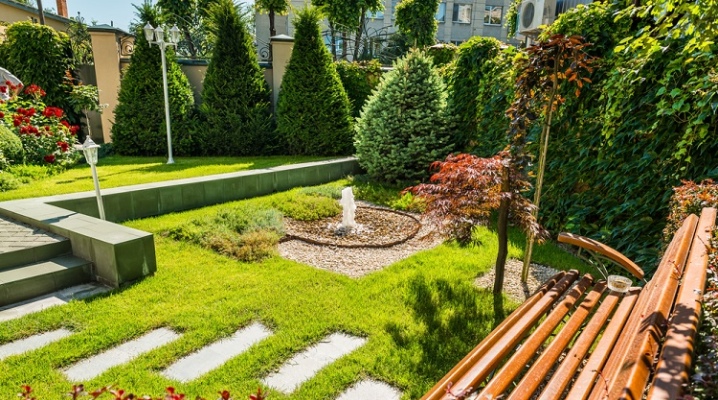
In landscaping, the key finishing point is landscaping the site. Only then does the space become truly visually interesting. If the engineering preparation of the territory has been carried out, and the matter is only for landscaping, it's time to take on the project.
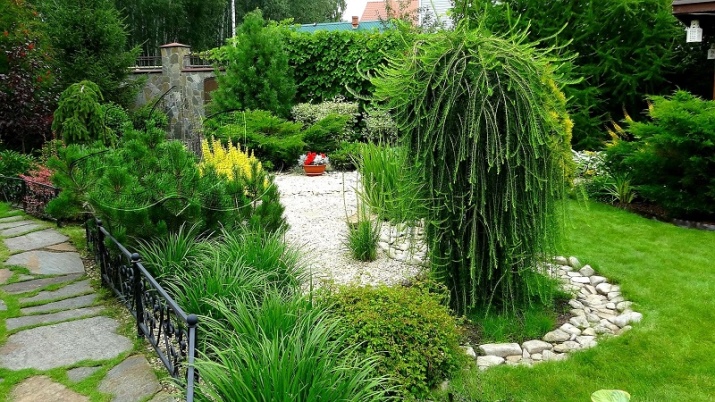
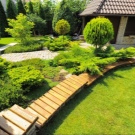
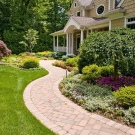

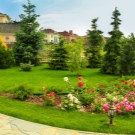
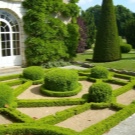
What should be considered?
So that the result is successful, and all the vegetation on the site is in harmony with each other, you need to adhere to three basic principles:
- taking into account the geophysical features of the territory;
- conformity to climatic zones;
- combinatorics of texture, dimensions and colors.
Landscaping is a multi-stage process:
- design - if possible, let a landscape designer take care of it, if it does not work out, the owner himself takes on the project (which is helped by observation and the Internet with a variety of examples);
- soil preparation and drainage - without this, you will not have to rely on lush vegetation;
- organization of artificial reservoirs, paths, platforms for stones - the architectural decor of the space is formed;
- planting shrubs and trees - decoration of the upper tiers of the site;
- arrangement of flower beds and lawns - decoration of the lower tiers.


Before planning, the north, east, south and west directions are determined. Be sure to find out the sides: sunny or shaded (this is important for the choice of vegetation). Both the direction of the wind and the level of groundwater are determined. It is advisable to analyze the soil - this characteristic helps a lot to figure out whether it is necessary to change its composition (feeding, enrichment, balancing trace elements, etc.). The same analysis will clarify what the level of the fertile layer is. The relief of the territory is an important point when choosing plants for landscaping. And if the site is uneven, and there is a possibility of leveling it, this must be done. But you can leave everything as it is and use the naturalness of the lowlands and hills in the arrangement and landscaping of the garden area.
You should also take into account the average seasonal air temperature, illumination throughout the day, precipitation statistics. But this does not mean that it is not worth taking the risk and planting plants on the site that are not typical for this region, exotic, rare. There can always be room for experimentation, and they are often successful. True, for this you have to try and create a special microclimate on the personal plot.
The shape of the site, the size, the buildings located on its territory - all this is also important.
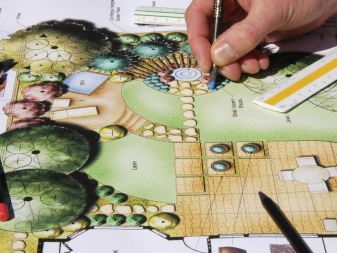
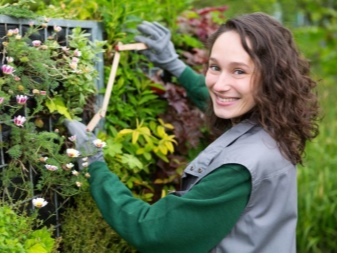
Species overview
There are several ways to refine the territory of a country house, each of which has its own advantages and is worthy of consideration.
External
It is usually bounded by the perimeter of the fence or hedge that performs its function. Such landscaping is beneficial both from the point of view of aesthetics and from the point of view of protecting the site from prying eyes, drafts and dust. If it is decided to enclose the site with a hedge, it can be imagined as honeysuckle, girlish grapes and beautiful climbing fast-growing trees. If you do not want to close this part, the hedge can be single-row or double-row.
For a single-row construction, shrubs or trees of the same height are used. But with a two-row planting, higher trees are combined with lower shrubs. The following plants are most often used: thuja, rose hips, jasmine, apple trees, spruce, lilac. The height of the hedge can also be very different, from a modest half a meter to two meters.Of course, such landscaping is very effective, but it will also require tremulous care.
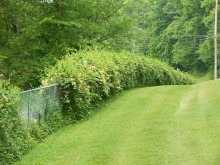
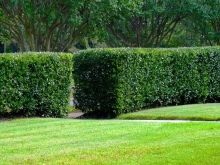
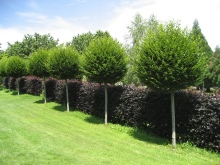
Internal
If you need to green the area adjacent to a house or other buildings, you can use flower beds, plants with climbing elements that form a wall with a thick carpet... You can also use ampelous flowers in beautiful baskets, special vases or pots. Plants can be placed at different levels from the ground, use different stands and pedestals.
To, for example, form bright, delicate flower waterfalls, you can take fuchsias, begonias, pelargonias, fortunias. Flower containers can be rearranged so that the landscape is dynamic and does not become familiar.

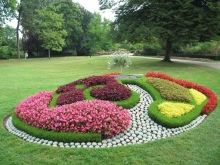
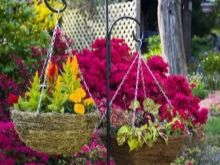
Intermediate
This landscaping means the area between the house, the fence and the outbuildings. There is a place for flower beds and flower beds, alpine slides, plantings along artificial reservoirs. Conifers and deciduous plants are considered more suitable; a few evergreen shrubs will also be appropriate.
There is another one vertical type of landscaping. It is characterized by the use of vines of one or more species, as well as floristic containers. This type is popular, as it copes well with masking building defects, if any. For example, a wall that is not well painted or a façade deformed over time can hide green spaces. A large area of landscaping also improves the microclimate, forms a nice shaded recreation area. Finally, such landscaping does not require large spaces, but always looks original.
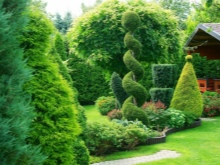
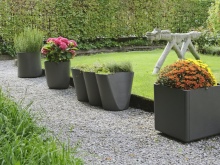

Which style should you choose?
Probably one of the most interesting stages of landscaping is choosing a style. Landscaping presents many options for styles, original, bright, characteristic and capable of completely "replaying" the space. In this mini-review 8 of the most interesting landscaping styles.
- Classical... In another way, it is called regular, and also French. The style is characterized by strict symmetry, impeccable and geometrically correct shapes, neatly trimmed shrubs, and an ideal lawn. The shape of the flower beds is strict, the crown of the trees is also subject to geometry, reservoirs or fountains - only in the center of the garden. Topiary cultures are a priority, any colors are used, but shades are necessarily soft.
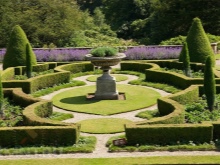
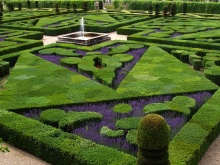
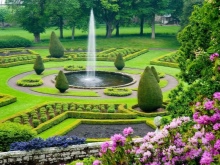
- English or landscape style. This is a natural site without strict forms, which merges with the surrounding nature as much as possible. It refers to the noble estates of the century before last, very romantic. It is characterized by winding garden paths, natural form of reservoirs, an imaginary feeling of lack of order. It is difficult to recreate such a style on a small plot, you need a lot of land space.

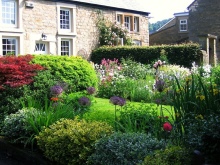
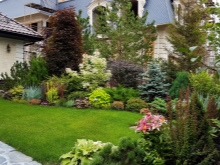
- Country style. Easy to create, feels natural and effortless. There are no strict lines, just as there are no strict principles of arrangement. In a small area, it is quite possible to recreate this style, starting with bright natural flowers, natural materials, fruit trees and such shrubs as viburnum, lilac, as well as bird cherry, hawthorn. The territory will be decorated with a decorative cute well, wicker (possibly living) hedge, old tubs and authentic barrels. Any handcrafted themed items would be appropriate for such a site.

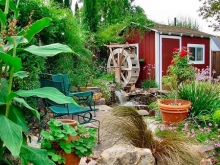
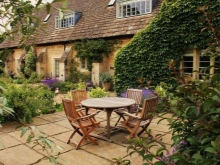
- Mediterranean... Looks convincing in the southern regions. This style fits very well on embossed areas, terraced slopes and patios in the southern part look ideal. Sandy, expressive orange, white and azure blue set the color tone. Ideally, palms, citrus and olive trees should grow here, but they are perfectly replaced by magnolia with viburnum and boxwood. The site will be decorated with colorful flower beds and planting of herbs.
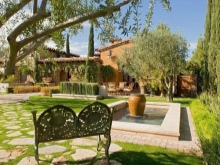
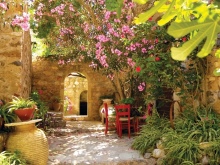
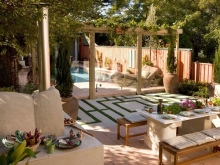
- Modern... The style is characterized by a streamlined tortuosity of forms, emphasized elegance.Natural materials are in priority, the center of the site is the house, from which, as if in a spiral, other elements move away. Holly plants and climbing crops will look authentic here.
If there are benches, fences and gazebos on the territory, they must contain forged elements with floral ornaments.

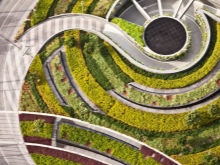
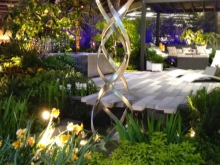
- Minimalism... Many are convinced that this style is good for small, modest-sized areas. But it is not so. Minimalism is suitable for those who prefer conciseness and tranquility to everything else, the absence of numerous details. The style does not impose mandatory requirements for plants: willow, birch, maple, and any fruit trees are appropriate. Their number is limited. Of the shrubs, forsythia and snowberry are considered preferred.
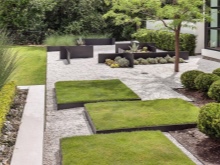

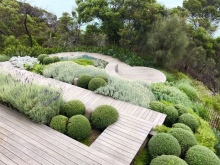
- Eco style... He preaches extreme naturalness, in which intermittent paving with grass, and gravel and stone paths, and the selection of crops, taking into account the maximum fusion with the flora of the area, can be present. On such a site, a hut, a natural-shaped pond and various crafts made of bark, snags, branches, vines, etc., look organically.
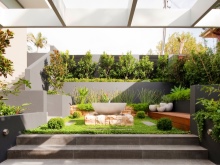
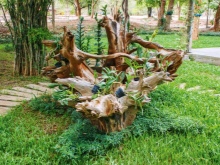
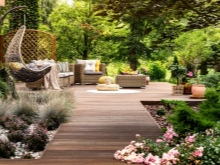
- Japanese style. Water, stones and plants dominate here. All components of the site should be balanced, with smooth interzonal transitions. In terms of colors, you need to be quite restrained, many shades of the same color are held in high esteem. Bamboo hedges will look great on such an area. The main plants are pine and juniper, plum, decorative small apple trees, maples and rocks with hilly crowns. Japanese spiraea, maiden grapes, and also rhododendrons of different types will also look good. The plot is favorably decorated with bright and large peonies, ferns, touching irises and pacifying cereals.
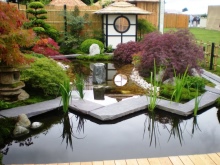
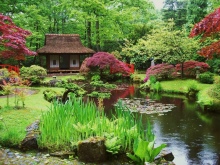

There are many more styles, but the ones described are considered the most popular, dominant. And if you want to be original, you can follow the theme of the forest style, which also has a clear ecological focus with minimal human intervention in the organization of space.
But this option is only appropriate for houses bordering the forest.


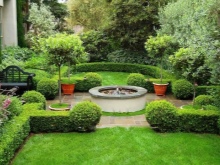
Planning
This stage involves the creation of a sketch plan for the future garden. The project is a diagram with explanations, understandable symbols and coverage of all significant points.
What you need to create a sketch:
- measurement and designation of the boundaries of the site on the sheet;
- designation of the location of the cardinal points;
- determination of the location of the main buildings;
- designation of all recreation areas and vegetable gardens;
- tying zones with paths and platforms;
- identification and design of trees already available on the site, and those that will remain and will be planted;
- drawing of ground and underground communications, power supply lines.
After that, it is necessary to check the plans with the features of the relief, its capabilities, with the determination of the state of the soil, as well as the level of occurrence of groundwater.

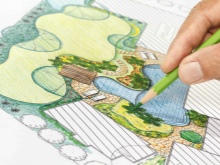

Main steps
It's time to work on the site itself. And this is also a multi-stage process.
Clearing
All unnecessary buildings have to be dismantled, old trees that should not remain on the site are cut down or uprooted. Garbage, roots are removed from the soil, all communications necessary at the moment are laid: water supply, electrical wiring and an irrigation system.



Beautification
At this stage, it is correct to lay paths and platforms on the territory, and their task is far from being limited to functionality - they help to create an optimal landscape design. It is the paths that connect the zones of the summer cottage into one harmonious space, they also dotted lines mark the boundaries of these zones. If the paths and the same sites are decorated with borders, there will be an even clearer drawing of the territory.
To create a hard surface for walkways and areas, stone, brick, concrete or tile materials are used.For soft coverage, crushed stone and gravel are used, for grass - grass mixtures that are not afraid of trampling. Well, combined coatings involve a mixture of different types, which can also turn out to be very interesting.
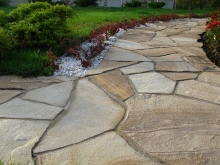

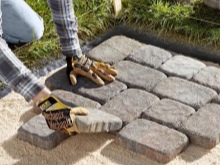
Planting
After the formation of paths and areas, the site will acquire a clear outline, and it will make it clear where and how to plant the plants. Elements of landscape design.
- Grass lawn... It is difficult to imagine a site without it, more often it creates a general background or becomes a connecting link for different elements. Lawns can be ordinary, parterre, shady, sports, etc. Simple, and at the same time good, is considered a version of the lawn grown from a conventional grass mixture, which also assumes the presence of cereals in the composition.

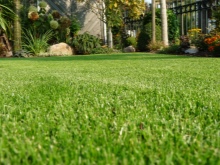
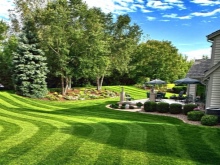
- Vertical gardening... In addition to the species described above, this is also the planting of shrubs and trees. Girlish grapes, honeysuckle and Chinese lemongrass are unpretentious in cultivation. Cascades of flowers will look great. Fruit crops are wonderfully combined with exotic trees or shrubs, but if all growth factors, soil characteristics and microclimate requirements are taken into account. The coniferous garden is less demanding. Lilacs, hawthorns and hydrangeas will complement it.
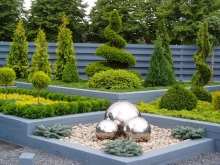
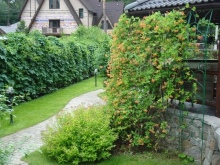
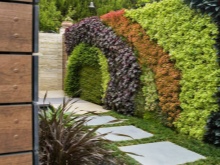
- Flower beds... For traditional horizontal gardening, this is almost an integral part, which is so pleasant to shape with your own hands. They set accents, they also emphasize the style. You can plant landscape groups, pick flowers according to flowering time, etc. If you want to plant trees and trees with economic efficiency, you should buy seeds in advance, during a period of low demand, when sellers offer discounts and promotions.
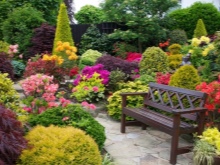
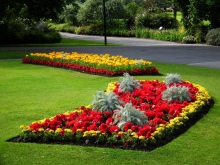
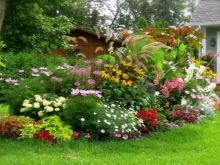
Newly-named landlords often want to do everything quickly, so that in one season the site looks like the cover of a thematic magazine. But decorative purposes, the selection of plants according to a number of criteria (for example, strictly frost-resistant) takes time, and it is very arrogant to count on one season.
Even before working on the site, it makes sense to create a folder on your computer, where all inspiring photos, tips, sketches, descriptions of plants and their species will be sent. Thus, at the stage of implementation, the owner of the site already clearly knows what he wants, does not make mistakes and works strictly according to the plan.
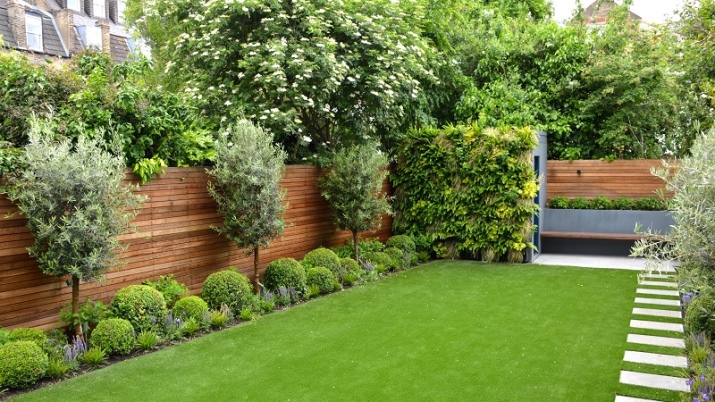

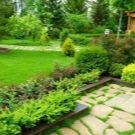
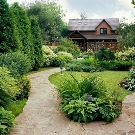
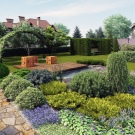
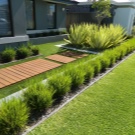



































































The comment was sent successfully.